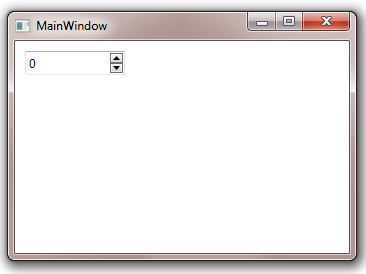Table of Contents
- Getting Started
- EO.Pdf
- EO.Web
- EO.WebBrowser
- EO.Wpf
- Overview
- Installation & Deployement
- Skin & Theme
- Common Taskes and Services
- EO.Wpf Buttons
- EO.Wpf Calendar & DatePicker
- EO.Wpf ComboBox
- EO.Wpf DockView
- EO.Wpf Gauge
- EO.Wpf ListBox
- EO.Wpf Menu
- EO.Wpf MaskedEdit
- EO.Wpf ProgressBar
- EO.Wpf Slider
- EO.Wpf SpinEdit
- EO.Wpf SplitView
- EO.Wpf TabControl
- EO.Wpf TreeView
- EO.Wpf Utility Controls
- EO.Wpf WindowChrome
- Sample Data Objects
- Common Topics
- Reference
| Getting Started |
Using EO.Wpf SpinEdit is easy. The following sample creates a SpinEdit with default settings:
XAML
<Window x:Class="Test.MainWindow" xmlns="http://schemas.microsoft.com/winfx/2006/xaml/presentation" xmlns:x="http://schemas.microsoft.com/winfx/2006/xaml" xmlns:eo="http://schemas.essentialobjects.com/wpf/" Title="MainWindow" Height="250" Width="350"> <StackPanel Margin="10"> <eo:SpinEdit HorizontalAlignment="Left" Width="100"/> </StackPanel> </Window>
The above code produces the following result:

You should usually set the following properties:
| Property | Remark |
|---|---|
| Minimum | The minimum valid value. |
| Maximum | The maximum valid value. |
| SmallChange | The value to be added or subtracted from the Value of the SpinEdit when user presses the spin button. |
| LargeChange | The value to be added or subtracted from the Value of the SpinEdit when user presses PageUp/PageDown button. |
Use the Value property to get or set the value of the SpinEdit control.

